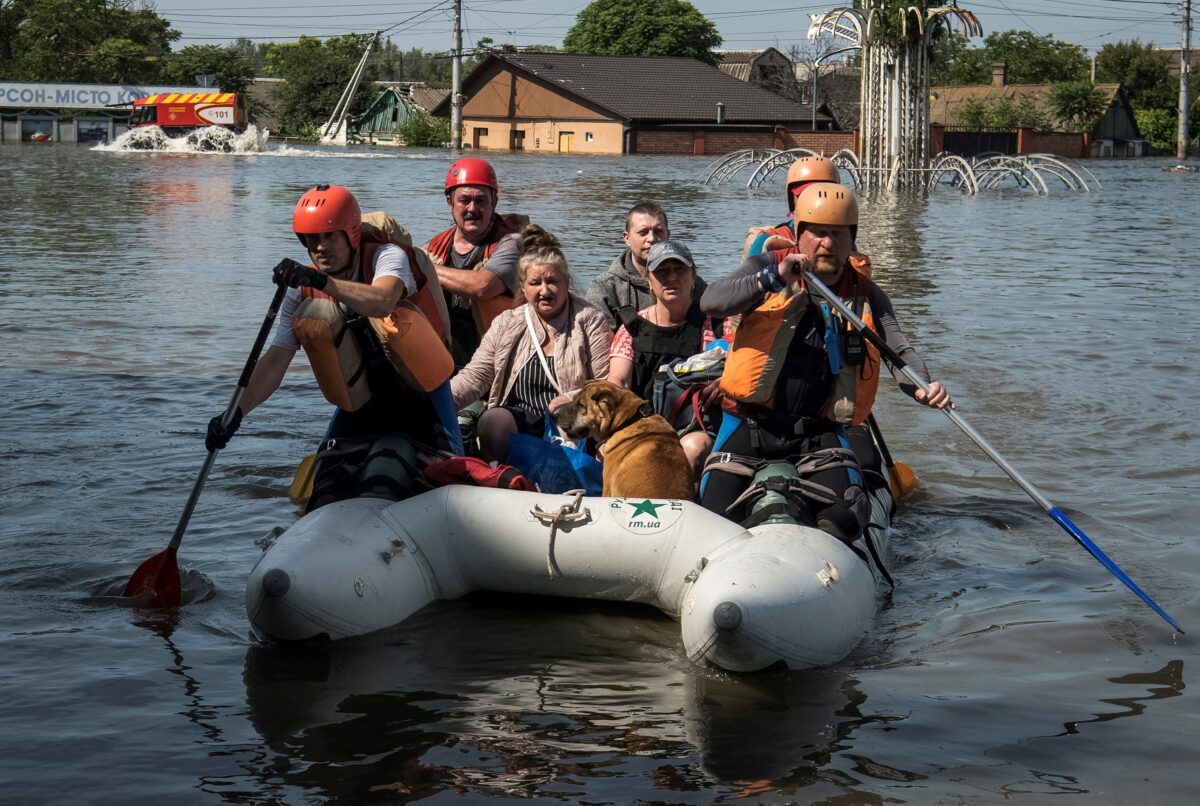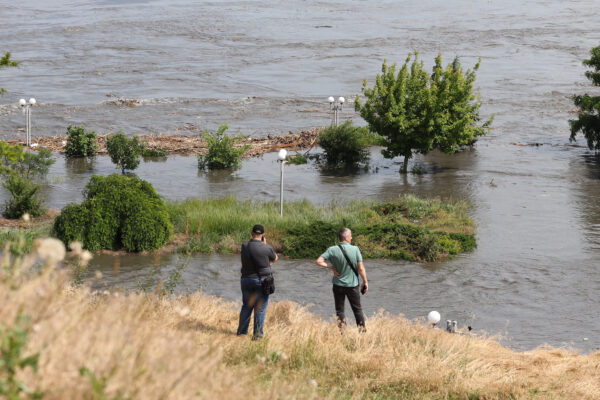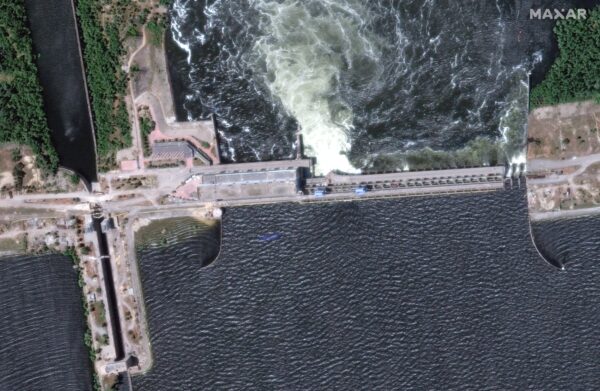


Local residents in the Kherson region continued to struggle with rising floodwaters one day after a critical hydroelectric dam was breached by as-yet-unknown causes.
“Everything is submerged in water: all the furniture, the fridge, food … everything is floating,” one 53-year-old resident of Kherson City, the Ukrainian-held regional capital, told Reuters.
The Nova Kakhovka dam, which spans the Dnipro River, was breached on the morning of June 6, causing widespread flooding and prompting fears of a looming humanitarian and environmental catastrophe.
Martin Griffiths, the UN’s undersecretary-general for humanitarian affairs, warned that the breach would have “grave and far-reaching consequences for thousands of people … on both sides of the [Russia-Ukraine] frontline.”
Speaking at the UN Security Council on the evening of June 6, Griffiths added that the catastrophe’s magnitude would “only become fully realized in the coming days.”
Water from the Soviet-Era dam is used to irrigate agricultural land in Kherson and the nearby Black Sea region of Crimea. It is also used to cool the Zaporizhzhia nuclear plant, located in the adjacent region of the same name.
Russia annexed Crimea in 2014. It also currently controls most of Zaporizhzhia, along with all of Kherson east of the Dnipro River.
Last November, Russian forces withdrew from all territory in Kherson west of the Dnipro. Since then, the river has separated the warring sides, who continue to engage in frequent artillery duels.
Despite its withdrawal seven months ago, Russian forces have remained in control of the dam.
On the Ukrainian-held side of the river, some 2,000 people have been evacuated thus far due to rising water levels. According to Kyiv, 42,000 residents face the risk of flooding, while hundreds of thousands could be left without drinking water.
Evacuations are also now underway on the Russian-held side of the Dnipro, where Moscow-appointed officials have declared a state of emergency.
According to Russia’s TASS news agency, 80 villages—all located in lowlands close to the dam—are at risk of inundation.
As residents were being evacuated, both sides accused the other of continued artillery shelling.
The Geneva Conventions explicitly prohibit the intentional targeting of dams during wartime.
Kyiv has accused Russian forces in Kherson of intentionally blowing up the dam. Moscow, for its part, says the dam was most likely targeted by a Ukrainian rocket.
Neither side, however, has yet to produce any evidence of its assertions.
Speaking at the Security Council, Sergiy Kyslytsya, Ukraine’s UN envoy, claimed it was “physically impossible to blow it [the dam] up from the outside by shelling.”
“It was mined by the Russian occupiers and they blew it up,” he added.
U.S. officials, meanwhile, say they are still collecting evidence to determine what—or who—was behind the breach.
Based on official statements, however, most appear to be leaning toward Russian culpability.
“Why would Ukraine do this to its own territory and people? Flood its land, force tens of thousands of people to leave their homes. It doesn’t make sense,” U.S. Deputy Ambassador to the UN Robert Wood told reporters.
At a June 6 press briefing, spokesman Vedant Patel said the U.S. State Department was “working to determine what happened.”
“But the important thing is that Russia started this war, and it was Russia that occupied this area of Ukraine, and it was Russia that was in control of this dam,” Patel added.
Speaking on Twitter, Ukrainian Foreign Minister Dmytro Kuleba chastised Western news outlets for failing to support the Ukrainian narrative.
“Infuriating to see some media report ‘Kyiv and Moscow accusing each other’ of ruining the Kakhovka dam,” he wrote.
Such reporting, Kuleba added, “puts facts and propaganda on equal footing.”
At a June 7 press briefing, Russian Foreign Ministry spokeswoman Maria Zakharova described Western reactions as “100 percent predictable.”
Calling for an international probe into the dam breach, she lamented the “endless desire to blame Russia for everything that happens, regardless of whether it actually happened.”
Vassily Nebenzia, Russia’s envoy to the UN, explicitly blamed Kyiv for the breach, which he said was intended to punish Crimea for acceding to Russia in 2014.
Speaking before the Security Council, he claimed the “terrorist act” was also meant to divert attention from recent Ukrainian battlefield losses.
Nebenzia went on to cite a Washington Post article from late last year, which appeared to suggest that Ukrainian forces had previously targeted the dam with U.S.-supplied rockets.
Published on Dec. 29, the article cited Andriy Kovalchuk, a Ukrainian military commander, who told the newspaper that Ukrainian forces had conducted a test strike with a HIMARS launcher on one of the dam’s floodgates, making three holes in the metal.
“The test was a success, Kovalchuk said, but the step remained a last resort,” the article reads.
When directly asked by reporters about the Washington Post article, Patel, the State Department spokesman, said: “I don’t have anything to offer on that.”
Reuters contributed to this report.



